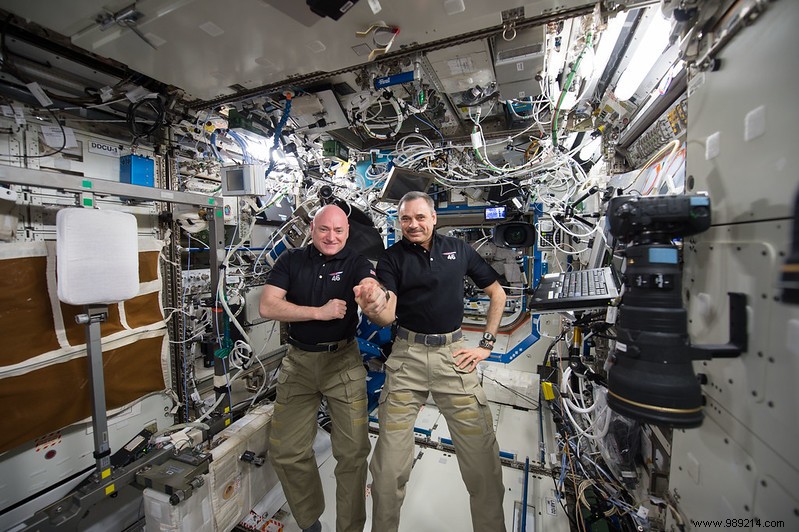According to a new study, after almost a year on board the ISS, American astronaut Scott Kelly's heart shrunk like swimmers in the world. endurance, but he remained reasonably fit. This research will obviously have implications for future long-term space travel.
The human body having evolved on Earth with its own gravity, our organism naturally undergoes some changes once in orbit. We know that astronauts are particularly prone to having swollen heads, crushed eyeballs and shriveled legs. Their bones also become more fragile and their muscles atrophy. However, these are not the only effects.
In a study published Monday, March 29, 2021 in the journal Circulation, researchers point out that the larger chamber of the heart of Scott Kelly, who spent nearly a year in aboard the International Space Station in 2015 and 2016 (340 days), had also lost mass (about 27%) .
On the other hand, having a smaller heart does not seem to have any adverse effects on the astronaut , according to Dr. Benjamin D. Levine, Professor of Internal Medicine at the University of Texas and author of this new work.
"His heart has adapted to the reduced gravity " , did he declare. "It has not become dysfunctional, the excess capacity has not been reduced to a critical level. He remained in reasonably good shape. Overall his heart shrunk and atrophied as you would expect from going into space “.
It was indeed intended that less gravity would affect Scott Kelly's left ventricle (the heart's largest and strongest chamber). In the environment of the ISS, the latter does not have to pump as hard as on Earth. Being less stressed, it then loses its physical shape like any other muscle.
On the other hand, it should be noted that for the astronaut, the shrinkage of this chamber occurred while he was exercising almost daily on board of the Resort .
Six days a week, the astronaut indeed ran on a treadmill for about 30 to 40 minutes or trained on a stationary bike. He also relied on the ARED counter-resistance exerciser. This machine, made up of vacuum cylinders, makes it possible to imitate weights and dumbbells on Earth.

In their article, Dr. Levine and his team also compared Mr. Kelly's heart to that of Benoît Lecomte, a long-distance endurance swimmer, while he was trying to cross the Pacific in 2018 (buoyancy in water has many of the same effects on the body in weightlessness). Remember that Mr. Lecomte finally had to abandon less than a third of the way, his support boat having been damaged by a storm.
However, the researchers believed that all those hours of swimming (eight hours of swimming per day for 159 days) would be exhausting enough to sustain Mr. Lecomte's heart. Dr. Levine even thought his muscle was going to get bigger, so much he exercised. Yet this one had also shrunk almost as quickly as Mr. Kelly's in space .
This conclusion did not fall on deaf ears, by the way. On reading this study, Scott Kelly indeed pointed out that his heart had reacted "like that of an elite athlete! "
Note that these cardiac atrophies do not last long term. The hearts of the two men have indeed found a normal size as soon as they return to dry land .
In the meantime, a smaller core could be a concern for future space missions. Scott Kelly's efforts on board the ISS have limited the weakening of his bones and muscles, but also of his heart. Also, without exercises, the astronaut's left ventricle would probably have shrunk further, leading to possible accidents .
On Mars, then, problems could quickly arise if an astronaut was injured or fell ill and could not exercise. It is also possible that the equipment breaks down. With weaker hearts, would-be explorers might feel dizzy and pass out after months of weightless travel. This therefore explains the importance of this work which, in the long term, will allow the agencies to carefully anticipate the physical preparation of those concerned .